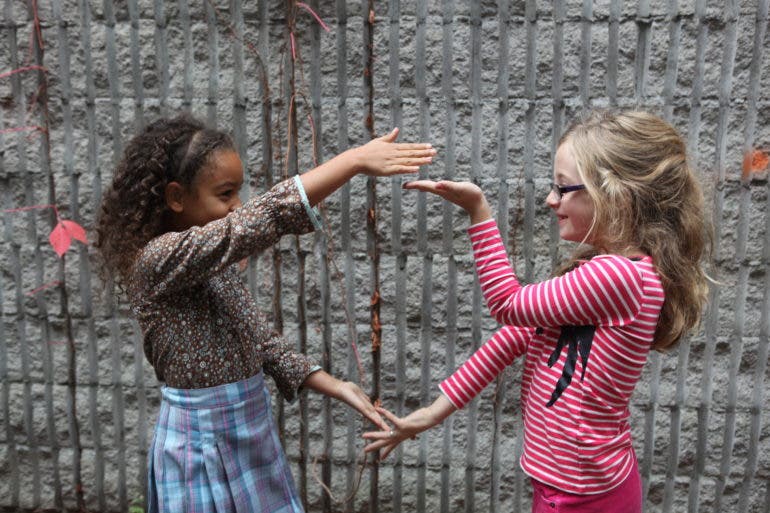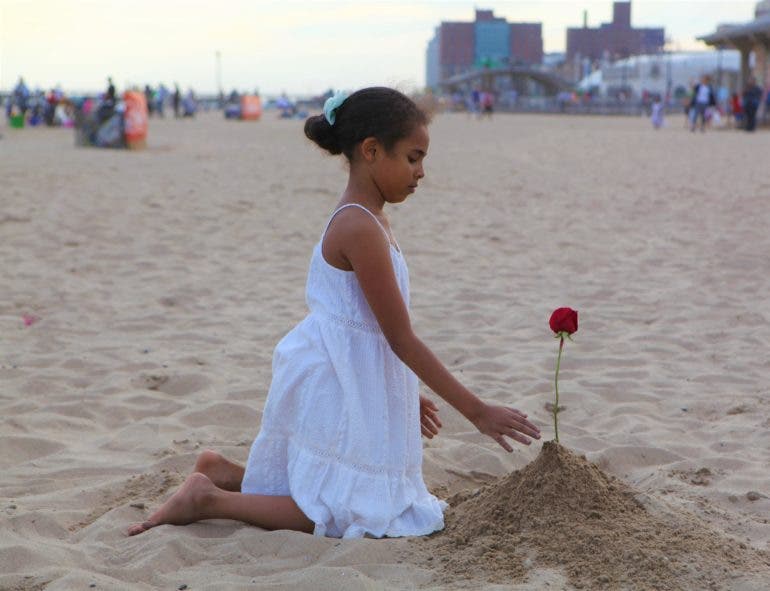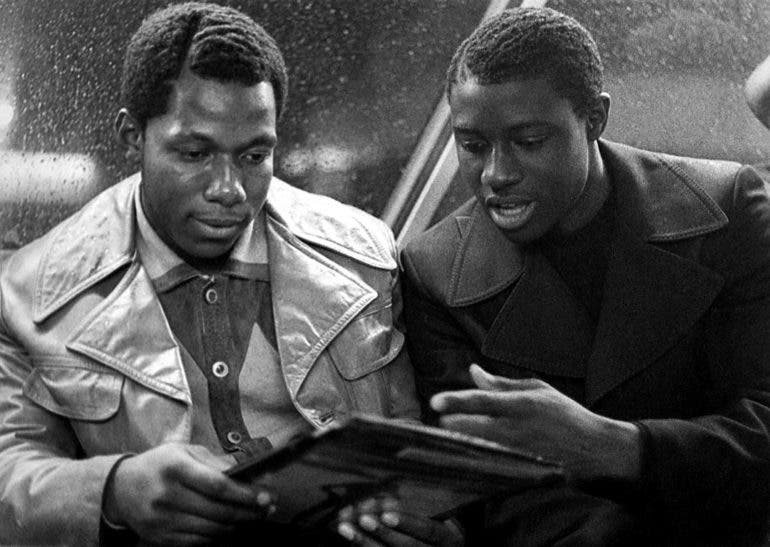Jamel Shabazz Takes Us on the Fascinating Journey of His Illustrious Career
All images by Jamel Shabazz. Used with permission.
“The creative in me still burns and is very much alive,” says Jamel Shabazz. After 45 years of working in the photo industry, we’re pleased to see that passion has yet to die. During his career, Shabazz photographed the people of New York, released several photo books, and had dozens of exhibitions. Aside from his personal success, it’s what he’s done for others that we find most impressive. Shabazz regularly volunteers with large organizations, helping to inspire young people with photography. If anyone has given their all to the craft, it’s this man. And we’re thrilled to be able to speak to him about his illustrious career.
Phoblographer: In an interview in 2016, you said you were not photographing as much. Has the pandemic sparked a resurgence within you to make photographs?
Jamel Shabazz: So much has transpired since that last interview. I actually wanted to slow down, but many great opportunities came my way and reignited a flame inside me to forge on.
Sadly though, what I found myself documenting most last year, were funeral services for friends and loved ones who have passed on. Of course, many of these events were unexpected, but I felt a need to dust off my gear and capture the moments, although painful.

However, the pandemic did force me to reevaluate my photographic practices, and the time that I once spent documenting the streets and political protests in my particular style, are long gone. Today, I mentor several young aspiring photographers who are more than eager to hit the streets and make work.
Phoblographer: How has photography helped you cope during these difficult times?
Jamel Shabazz: Since I am home a lot more, I have spent long hours going through my entire archive. This experience has allowed me to revisit so many fond memories and places close to my heart. After 45 years of extensive traveling and work, I can now redirect a portion of my time towards scanning hundreds of vintage negatives I had stored up for decades. For me, this experience is the closest to being in a darkroom and the entire process is rather therapeutic and reflective.
To add to the atmosphere that I set for myself, I throw on some old school jazz; in most cases, Lonnie Liston Smith and John Coltrane, burn some sage, and from there I am in the creative zone. It allows me to travel to another time and place.
Sadly though, what I found myself documenting most last year, were funeral services for friends and loved ones who have passed on.
– A quote from Jamel Shabazz
Phoblographer: You’ve been in this game for quite some time. How has your passion for the craft evolved?
Jamel Shabazz: My passion for the craft is constantly evolving. One of the things I find myself doing a lot these days is fueling my social media feed with photographs. This new endeavor has provided me with a global platform to share my work with a larger audience.
In the process, it’s a blessing to reconnect with many people I photographed many years ago. The most intriguing part for me is hearing the backstories. I may have had my interpretation of their situation, but to hear their stories has taken me to a whole new level of understanding. They are both bitter and sweet, but in most cases, they bring a degree of joy and healing to the subject. That experience alone keeps my flame burning stronger than ever.

Phoblographer: You’ve photographed countless people in New York over your career. Can you name one or two who stuck in your mind and why?
Jamel Shabazz: Having an opportunity to photograph Gordon Parks was one of the highlights of my career. I met him at the Museum of the City of New York in 1997, where he was signing copies of his newly released book, “Half Past Autumn.”
There, I had an opportunity to tell him how much his photography and journey had inspired my photographic practices. He humbly expressed his gratitude and signed both a copy of the book, and a photograph that I had taken, which mirrored his unique work. I would never see him again, but I will forever treasure that moment.
Another great person I met and photographed, was Brigette Freed, wife of documentary photographer Leonard Freed, who passed away in 2006. It was his book “Black in White America” which opened up my eyes at a very young age to the importance of documentary photography as well as the issue of racism in America. That one book would serve as a key cornerstone and guide throughout my career.
Even though I never had a chance to meet Leonard, in 2008 I was blessed to receive an invitation from Brigitte to visit his home. During my time with her, I expressed how much her late husband’s book influenced me. I also told her that my father, a naval photographer, had a signed copy of that book, which sat on our family coffee table for years and as a young boy, how I studied it from cover to cover.

As a result, I not only developed a profound love for black and white photography, but also learned about injustice, poverty, and racism. She was astonished by all the things I shared. And she told me it was her who printed the majority of Leonard’s work. She also shared backstories to a number of his iconic photos. A special relationship was born on that day.
During my last visit to her home late last year, she gifted me with an original 8 x 10″ signed print of one of my favorite photos of his, “We Must Have Justice.” That experience has brought a part of my photographic journey full circle.

Phoblographer: You’re also a fashion designer. What gives you the biggest buzz, photographing someone or someone wearing the clothes you designed?
Jamel Shabazz: It is a combination of both. After photographing so many people over the years and shooting many clothing brands, I decided to change things up and start photographing my models and friends with some of my personal fashion designs, as they always tend to add extra flavor to all of my shoots. When shooting fashion photography, besides capturing the images, I prefer to work as the stylist too. Having more control allows me to get the look I am seeking.
In the process, it’s a blessing to reconnect with many people I photographed many years ago. The most intriguing part for me is hearing the backstories. I may have had my interpretation of their situation, but to hear their stories has taken me to a whole new level of understanding. They are both bitter and sweet, but in most cases, they bring a degree of joy and healing to the subject. That experience alone keeps my flame burning stronger than ever.
A quote from Jamel Shabazz
Phoblographer: When you look at the condition of the photo industry right now, how do you feel about it?
Jamel Shabazz: The pandemic has caused us to reexamine how we engage in photography. For example, “Photoville,” is an amazing yearly event created by Sam Braziley, his wife Laura, and Dave Shelly, underneath the Brooklyn Bridge overlooking the East River.
It is a wonderful celebration of photography that uses the platform of documentation to bring people together under one umbrella. People come from around the globe to the event. The various exhibitions, panels, and workshops are inspiring and create a spirit of hope while inspiring friendships. I, along with so many other photographers and lovers of the craft, look forward to attending. But now with COVID, all of that has changed.

The once packed exhibitions in galleries and museums have also changed dramatically. Most of them shut down during the early part of the pandemic. I miss those days dearly. They brought so many people from diverse communities together. However, on a more hopeful side, today, I am seeing more photographers finding new ways to engage each other via Instagram live talks, Zooms, Club House and other forums, and I personally find them very informative, insightful and needed.
Phoblographer: Having already done a range of projects, what would really excite you in terms of a project in the present day?
Jamel Shabazz: One of the highlights of my career happened back in 2018. I was asked to create the advertisement for Epix mini series “Godfather of Harlem.” Working on a period movie based in Harlem NY in 1965, was the ultimate dream job for me. My task was to photograph veteran actors Forest Whitaker, Vincent D’Onofrio, Giancarlo Esposito, Nigel Thatch, IIfenesh Hadera, and a host of others. Despite the very long hours, and working in extremely cold conditions, I absolutely enjoyed everything about it.

Today, I would love to return to a set, particularly to produce content for another period or war movie. One of my ultimate goals though, is to produce a couple of scripts I wrote for a movie, but preferably a miniseries about my life coming of age in the 1970s and 1980s.
Phoblographer: Do you consume much photography? What new/up and coming photographers do you feel have a bright future in the industry?
Jamel Shabazz: I consume photography like I consume a good cup of coffee; it is my daily fix. Instagram has created a great space to find many talented photographers from all around the world. It has not only afforded me the opportunity to view their great photographs, but to also reach out to those who may be relatively unknown and whose work I admire.
Back in the old days, I would spend countless hours in Barnes & Nobles, or Rizzoli Books looking at photography books and periodicals, and now I can view them online. There is an endless stream of fresh talent out there when it comes to new and up and coming photographers. Most may be low on the radar, but here are just a few that I discovered on Instagram.

Michael Young is an amazing street and documentary photographer from the Bronx who has a little over five years in the craft. But he has amassed a large body of work that, in my opinion, mirrors the work of photographer, Roy Decarva.
Toronto born Sara Hylton is a humanitarian with a wonderful soul who works as a documentary photographer covering a wide range of social issues throughout the world. She currently works for National Geographic.
Khary Mason is a retired homicide detective and prolific poet from Detroit who turned photographer and mentor. Khary’s motto is “Advocacy through Imagery.” Due to his various experiences from childhood to law enforcement, he is an advocate for children from marginalized communities, mentoring through photography and spoken word.
Lastly, there is Brooklyn born photographer, Laylah Amatullah Barrayn. She is a documentary, portrait photographer, curator, and author who has been on a trajectory these past few years. She curates compelling exhibitions/lectures, while documenting majors events around the country. She is also a regular contributor to the New York Times, Getty Images, and Vogue Magazine.
Phoblographer: Looking at your work, I see the strong community, the vibrant clothing culture, and the thriving music scene. Was it a conscious decision to focus on the positives within the black community, rather than only the struggles it faced?

Jamel Shabazz: During the exact same time I was documenting various communities throughout the East Coast, I saw the urgent need to train my lens on poverty, prostitution, homelessness and addiction. Those circumstances were ever-present, and unavoidable and I was personally troubled seeing so much anguish and struggle. Reviewing my negatives, I find that there is an even mix of joyful images celebrating families, friendship, and innocence. However, there are others on the same negatives, which focus on the more painful side of life.
Phoblographer: When it comes to cameras, much has changed since you started. How do you feel about how cameras have evolved throughout the years?
Jamel Shabazz: Yes, so much has changed from the time I picked up my very first camera. I started with a basic point and shoot Kodak 126 Instamatic. I would later graduate to my workhorse camera, the Canon AE1.

Back in the 80s, having a camera that had auto focus with a built in flash was major. When I look at how cameras have evolved over the decades, I find them intriguing, as digital photography alone was a major advancement in the field of photography. Today I embrace all forms of instruments we can use to make an image – from digital, mirrorless, and cellphones. Back in the day, I could never imagine that there would come a time in which I would no longer use film, but that time has arrived, and I have officially retired my Contax 645.
Phoblographer: Asking for a moment of reflection, how do you feel about your career?
Jamel Shabazz: First and foremost, I give thanks every single day for the path/career I have been given. I feel that I was put on this earth to be a light, and the camera was the compass which guided me on this 40 plus year journey.
One of the joys in having such a long career is that I met so many incredibly wonderful people from all over the world. All of them have touched my heart and inspired me on many levels. I remain eternally grateful to my father who taught me the craft, Leonard Freed and Gordon Parks who provided me with direction, and the many publishers, editors, creative directors, fans, and muses. They all believed in me over the years, and I would not have a career if not for them.

Phoblographer: Finally, on your website, it says you’re working on “The Book of Life.” How’s that coming along? And, as the name may suggest, will this be your final contribution to the photo industry?
Jamel Shabazz: The title “The Book of Life,” is a tentative working title. The project itself was set in full motion on January 3rd, after many years of building up a substantial body of work. I am working with a great team of creative minds assisting me, along with a top-notch publisher.

This will hopefully be my most comprehensive book thus far, and along with my images dating back to 1974, there will be photographs from my father’s collection, with esteemed scholars to contribute to the text. Right now, it is a work in progress, and I am thankful to have another opportunity to share my journey by way of a new book.
I hope that more volumes will proceed it, for I have amassed countless images since first starting out on this extensive journey.
You can enjoy more of Jamel’s work by visiting his website.